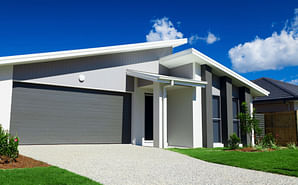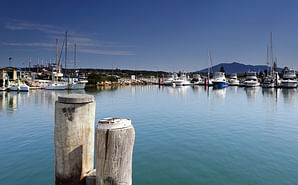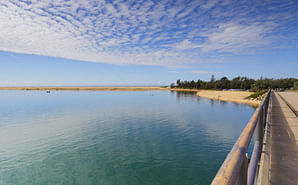About sewage treatment
The main reasons for treating sewage are to protect public health as sewage contains bacteria, viruses and protozoa in very high numbers. Some of these can be pathogenic (disease or illness causing) to humans. It also help protect the environment in general.
Reasons for sewage treatment
The main reasons for treating sewage are:
- Protection of public health.
Sewage contains bacteria, viruses and protozoa in very high numbers. Some of these can be pathogenic (disease or illness causing) to humans.
- Protection of the environment.
Sewage contains putresible organic matter that micro-organisms use as food to live and reproduce. Dissolved oxygen is consumed by micro-organisms as they feed on the organic matter and multiply. If the dissolved oxygen is used up faster than it can be made by natural process, the concentration may be lowered to a level where fish and other forms of aquatic life can no longer survive.
Sewage contains nitrogen and phosphorous that can stimulate the growth of algae and undesirable aquatic plants.
Sewage contains sanitary napkins, nappies, condoms, cotton buds and pieces of paper and plastic. Whilst these should not be disposed to sewer, their presence requires removal to prevent pollution of the environment and impacts on aquatic organisms.
Aims of sewage treatment
The main aims of sewage treatment are:
- Remove pathogens to levels where human contact with effluent and receiving waters presents a low health risk
- Degrade organic matter to a level where it does not exert a significant oxygen demand on receiving waters
- Remove nutrients to levels where algae, plants and other organisms in receiving waters are limited in their growth
- Remove unsightly or potentially harmful objects disposed of to sewer
How sewage is treated in the Bega Valley Shire
There are ten sewage treatment plants (STPs) in the Bega Valley Shire. Each STP screens the incoming sewage to remove macro solids and provides a tank (Port Macquarie tank, Bathurst box, Pasveer channel or bioreactor tank) with a regulated supply of oxygen (from diffused and/or surface aerators) for a food web of bacteria and other micro-organisms (known as “activated sludge”) to coagulate and biochemically degrade (oxidise) organic matter. The food web consists of numerous habitats, niches and relationships (symbiotic and predator-prey) for micro-organisms to feed on the organics and transfer carbon and energy and in the process:
- biochemically degrade complex carbon and nitrogen compounds to simpler compounds like carbon dioxide (C02) and nitrate (N03-) in the effluent.
- biochemically adsorb compounds (organic, inorganic, toxic, pharmaceutical) in the activated sludge for removal as waste sludge to the sludge lagoons
- reduce the number of faecal bacteria and pathogenic organisms
All the STPs are not the same size and there are a number of differences in the treatment process units and operational settings. Some of the STPs provide further treatment, such as chemical dosing to reduce phosphorous concentrations, clarification and disinfection through chlorine dosing or ultraviolet light.
At the large STPs a proportion of the activated sludge is removed from the aeration tanks at each STP and pumped to sludge lagoons. Sludge lagoons, when full, are taken off-line for six months for the sludge to digest anaerobically and further degrade the organics. The stabilised sludge is then pumped to a drying bed and allowed to dry to a black earthy product called “biosolids”. Biosolids are sampled, tested and classified according to EPA Guidelines. Depending on their classification, the biosolids are then either taken to landfill and used to provide a growth medium for establishing a grass cover on capped cells or used on agricultural land as a fertilizer.
At the smaller STPs the sludge is stored in tanks and every 3 weeks transported by road tanker to the larger STPs and added to an on-line sludge lagoon.
The table below provides a summary of capacities and treatment types at each STP. Annotated aerial photos showing the treatment units at each STP can be viewed in Treatment and monitoring location diagrams.
| STP | Capacity EP(Equivalent Persons) | Treatment type |
|---|---|---|
| Eden STP | 8,000 | Intermittently decanting extended aeration (IDEA) |
| Merimbula STP | 15,500 | Intermittently decanting extended aeration (IDEA) and chlorine disinfection |
| Tura Beach STP | 4,500 | Continuous extended aeration (CEA) and clarification |
| Tathra STP | 6,200 | Continuous extended aeration (CEA), clarification, phosphorous removal and chlorine disinfection |
| Bega STP | 8,000 | Sequencing batch reactor (SBR), phosphorous removal and UV disinfection |
| Bermagui STP | 6,000 | Continuous extended aeration (CEA), clarification and UV disinfection |
| Wolumla STP | 800 | Membrane bioreactor (MBR) and UV disinfection |
| Candelo STP | 800 | Membrane bioreactor (MBR) and UV disinfection |
| Cobargo STP | 800 | Membrane bioreactor (MBR) and UV disinfection |
| Kalaru STP | 800 | Membrane bioreactor (MBR) and UV disinfection |






